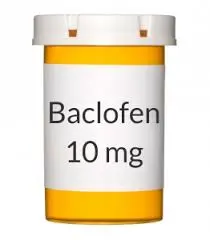Diclofenac
What is diclofenac?
Diclofenac is a nonsteroidal anti-inflammatory drug (NSAID). This medicine performs by decreasing substances in the body that cause pain and inflammation. Diclofenac is utilized to treat mild to moderate pain, or signs and/or symptoms of osteoarthritis or rheumatoid arthritis. Voltaren is also indicated for the therapy of ankylosing spondylitis. The Cataflam trademark of this medicine is also used to feast menstrual cramps.
Diclofenac powder (Cambia) is used to feast a migraine headache attack. Cambia will only feast on a headache that has already started. It will not control headaches or decrease the number of attacks.
About diclofenac
Diclofenac is a medicine that lowers swelling (inflammation) and pain. It helps to relieve aches and pains, as well as problems with joints, muscles, and bones. These include:
- rheumatoid arthritis and osteoarthritis
- sprains and strains in muscles and ligaments
- back pain
- toothache
- migraine
- gout
- Ankylosing Spondylitis – this causes inflammation of the spine and other parts of the body
Diclofenac comes as tablets and/or capsules, including slow-release tablets and capsules, and suppositories. These are available on prescription only. Diclofenac gel and plasters for joint pain are available to purchase from pharmacies. It can also be provided as an injection or as eyedrops. These are usually only given in hospitals. A high-strength diclofenac gel (including 3% diclofenac) is used to treat actinic keratoses (dry, scaly patches of skin generated by sun damage). This treatment is usually prompted after examination by a dermatologist and is not covered here.
Warnings
You should not use diclofenac if you have a history of allergic reactions to aspirin or NSAIDs (non-steroidal anti-inflammatory drugs). Diclofenac could also raise your risk of fatal heart attack or stroke, especially if you use it long term or take high doses, or if you have heart disease. Do not operate this medicine just before or after heart bypass surgery (coronary artery bypass graft, or CABG). Diclofenac may also induce stomach or intestinal bleeding, which may be fatal. These conditions can also happen without warning while you are using this medicine, particularly in older adults.
Before taking this medicine
Diclofenac can also increase your risk of fatal heart attack or stroke, even if you do not have any risk factors. Do not employ this medication just before or after heart bypass surgery (coronary artery bypass graft, or CABG). Diclofenac may also induce stomach or intestinal bleeding, which may be fatal. These disorders may also occur without warning while you are using this medicine, especially in older adults. You should not abuse diclofenac if you are allergic to it, or if you have ever had an asthma attack or extreme allergic reaction after taking aspirin or nonsteroidal anti-inflammatory drugs. Do not employ Cambia to dine a cluster headache. Do not employ Zipsor if you are allergic to beef and/or beef protein.
To create sure this drug is safe for you, tell your physician if you have:
- heart disease, high blood pressure;
- ulcers or bleeding in your stomach;
- asthma;
- liver or kidney disease; or
- if you smoke.
Diclofenac can also influence ovulation and it may be harder to get pregnant while you are employing this medicine. If you are expectant, you should not take diclofenac unless your medic tells you to. Taking an NSAID during the final 20 weeks of pregnancy can also cause serious heart or kidney problems in the unborn baby and potential complications with your pregnancy.
How should I take diclofenac?
- Take diclofenac exactly as prescribed by your doctor. Observe the recommendation on your prescription label and read all medication guides. Your doctor may occasionally change your dose. Utilize the lowest dose that is efficacious in treating your condition.
- Different brands of diclofenac contain various amounts of diclofenac and may have different uses. If you switch labels, your dose needs may also change. Observe your doctor’s teachings about how much medicine to take. Request your pharmacist if you have any inquiries about the brand you obtain at the pharmacy.
- Consume the pill whole and do not crush, chew, or break it.
- Take Zorvolex on an open stomach, at most smallish 1 hour before or 2 hours after a meal.
- Separate the powder form of this medicine (Cambia) with 1 to 2 ounces of water. Do not utilize any other type of liquid. Stir this combination and drink all of it right away. Cambia performs most reasonably if you take it on an empty stomach.
- Contact your physician if your headache does not completely go away after carrying Cambia.
- If you utilize diclofenac long-term, you may need frequent medical tests. Reserve at space temperature away from moisture and heat. Keep the bottle tightly closed when not in use.
How to take tablets and capsules – Consume diclofenac tablets or capsules with a glass of milk. If you require to take them with water, take them after a meal or snack. Taking them with milk or food means they will be less likely to upset or irritate your stomach. Consume them whole, do not crush, break, and/or chew them.
Dosing information
Usual Adult Dose for Osteoarthritis:
- Diclofenac free acid tablets: 35 mg orally 3 duration a day
- Diclofenac potassium immediate-release pills: 50 mg orally 2 or 3 terms a day
- Diclofenac sodium enteric-coated pills: 50 mg orally 2 or 3 times a day or 75 mg orally 2 periods a day
- Maximum dose: 150 mg daily
- Diclofenac sodium extended-release tablets: 100 mg orally earlier a day
- Use: For the relief of signs and/or symptoms of osteoarthritis.
Usual Adult Dose for Ankylosing Spondylitis:
- Diclofenac sodium enteric-coated and delayed-release pills: 25 mg orally 4 times a day. An additional 25 mg dose may be distributed at bedtime, if necessary
- Maximum dose: 125 mg per day
- Use: For sensitive or long-term use in the relief of signs and symptoms of ankylosing spondylitis.
Usual Adult Dose for Dysmenorrhea:
- Diclofenac potassium immediate-release pills: 50 mg orally 3 times a day
- Comments: An initial dose of 100 mg orally observed by 50 mg oral doses may also provide better relief for some patients; start treatment upon the arrival of the first symptoms and continue for a few days.
- Use: For the reassurance of signs and symptoms of immediate dysmenorrhea.
Usual Adult Dose for Rheumatoid Arthritis:
- Diclofenac potassium immediate-release tablets: 50 mg orally 3 or 4 periods a day
- Diclofenac sodium enteric-coated and delayed-release pills: 50 mg 3 to 4 times a day or 75 mg orally doubled a day
- Maximum dose: 225 mg daily
- Diclofenac sodium extended-release tablets: 100 mg orally one time a day
- Maximum dose: 100 mg orally 2 times a day; this would be for the periodic patient in whom the benefits outweigh the clinical risks.
- For the alleviation of signs and symptoms of rheumatoid arthritis
Usual Adult Dose for Migraine:
- Diclofenac potassium for verbal solution packets: 50 mg (1 packet) orally once
- Comments: This drug is not indicated for the preventative therapy of migraine or usage in cluster headaches; the safety and efficacy of a second dose have not been established.
- Use: For acute therapy of migraine with or without aura.
Usual Adult Dose for Pain:
Oral:
- Diclofenac potassium liquid-filled tablets: 25 mg orally 4 times a day
- Diclofenac complimentary acid capsules: 18 mg or 35 mg orally 3 times a day
- Diclofenac potassium immediate-release pills: 50 mg orally 3 times a day; an initial dose of 100 mg orally observed by 50 mg oral doses may provide better relief in some patients.
Parenteral:
- 37.5 mg IV bolus over 15 seconds every 6 hours as required for pain
- Maximum Dose: 150 mg per day
- Comment: Patients should be well hydrated before IV administration of this drug to reduce the risk of adverse renal reactions.
- Uses: For the management of mild to moderate acute pain (oral, IV) and moderate to severe pain alone or in a mixture with opioid analgesics (IV).
What to avoid
- Avoid drinking alcohol. It may improve your risk of stomach bleeding.
- Evade taking aspirin or different NSAIDs unless your doctor tells you to.
- Request a doctor or pharmacist before employing other medicines for pain, fever, swelling, or cold or flu symptoms. They may also include ingredients similar to diclofenac (such as aspirin, ibuprofen, ketoprofen, or naproxen).
Diclofenac side effects
Get emergency medical help if you have signs of an allergic reaction to diclofenac (hives, difficulty breathing, swelling in your face or throat) or a severe skin reaction (fever, sore throat, burning eyes, skin pain, red and/or purple skin rash with blistering and peeling). Suppress exploiting diclofenac and seek medical therapy if you have a serious drug reaction that can affect many parts of your body. Symptoms may also contain skin rash, fever, swollen glands, muscle aches, severe weakness, unusual bruising, or yellowing of your skin or eyes. Get emergency medical assistance if you have signs of a heart attack or stroke: chest ache spreading to your jaw or shoulder, sudden numbness or weakness on one side of the body, slurred speech, and/or feeling short of breath.
Quit utilizing this medicine and call your doctor at once if you have:
- the foremost sign of any skin ras and no matter how mild;
- flu-like symptoms;
- heart problems – swelling, rapid weight gain, supposing shortness of breath;
- kidney problems – slight or no urinating, painful or difficult urination, swelling in your arms and/or legs, feeling tired or short of breath;
- liver problems – nausea, diarrhea, stomach pain (upper correct side), tiredness, itching, shady urine, jaundice (yellowing of the skin or eyes); or
- signs of stomach bleeding – bloody and/or tarry stools, coughing up blood or vomit that looks like coffee environments.
Common diclofenac side effects may include:
- indigestion, gas, nausea, vomiting, stomach pain;
- diarrhea, constipation;
- headache, dizziness, drowsiness;
- abnormal lab tests;
- itching, sweating;
- stuffy nose;
- increased blood pressure; or
- swelling and pain in your arms and legs.
What other drugs will affect diclofenac?
Request your doctor before using diclofenac if you take an antidepressant. Taking distinguishing antidepressants with an NSAID may cause you to bruise or bleed easily.
Inform your doctor about all your other medicines, especially:
- heart or blood pressure medication, containing a diuretic or “water remedy”;
- anoother type of diclofenac (Arthrotec, Flector, Pennsaid, Solaraze, Voltaren Gel);
- a blood thinner – warfarin, Coumadin, Jantoven
- other NSAIDs – aspirin, ibuprofen (Advil, Motrin), naproxen (Aleve), celecoxib (Celebrex), indomethacin, meloxicam, and/or others.
This index is not complete. Other drugs may also interact with diclofenac, including medication and over-the-counter medicines, vitamins, and herbal products. Not all potential drug interactions are listed here.
Serious side effects of Diclofenac
Along with its required effects, diclofenac may also cause some unwanted effects. Although not all of these side effects may happen, if they do occur they may require medical attention. Check with your doctor instantly if any of the following side effects appear while taking diclofenac:
More common
- Acid or sour stomach
- belching
- bleeding gums
- blood in the urine or stools
- bloody or black, tarry stools
- burning while urinating
- chest pain
- chills
- cough
- clay-colored stools
- cloudy urine
- constipation
- dark urine
- reduction in urine output or decrease in the urine-concentrating ability
- diarrhea
- dizziness
- feeling of indigestion
- fever
- frequent urge to urinate
- headache
- heartburn
- increased bleeding time
- indigestion
- itching skin or rash
- light-colored stools
- loss of appetite
- nausea and vomiting
- pain in the chest below the breastbone
- painful or difficult urination
- pale skin
- pinpoint red spots on the skin
- stomach bloating, burning, cramping, discomfort, upset, and/or pain
- sore throat
- sores, ulcers, and/or white spots on the lips or in the mouth
- swelling or inflammation of the mouth
- swollen glands
- trouble breathing
- unpleasant breath odor
- unusual bleeding or bruising
- unusual tiredness or weakness
- upper right abdominal or stomach pain
- vomiting of blood or cloth that looks like coffee grounds
- weight loss
- yellow eyes and skin
Less common
- Blistering, peeling, loosening of the skin
- blurred vision
- burning, crawling, itching, numbness, prickling, “pins and/or needles”, or tingling feelings
- confusion
- change in consciousness
- discouragement
- dizziness, faintness, and lightheadedness when getting up suddenly from a lying or sitting position
- the feeling of continuous movement of self or surroundings
- feeling sad or empty
- irritability
- joint or muscle pain
- lack of appetite
- lack or loss of strength
- loss of consciousness
- loss of interest or pleasure
- nervousness
- pain and discomfort in the arms, jaw, back, or neck
- pale or blue lips, fingernails, or skin
- red irritated eyes
- red skin lesions, usually within a purple center
- redness, soreness, or itching skin
- sensation of spinning
- shakiness in the legs, arms, hands, and/or feet
- sleepiness or unusual drowsiness
- stiff neck or back
- trembling and/or quivering of the hands or feet
- trouble concentrating
- trouble sleeping
Get emergency assistance immediately if any of the subsequent symptoms of overdose happen while taking diclofenac:
Symptoms of overdose
- Agitation
- blurred vision
- change in consciousness
- change in the capability to see colors, especially blue or yellow
- confusion
- depression
- difficult or trouble breathing
- hives
- hostility
- irregular, fast or slow, or shallow breathing
- irritability
- loss of consciousness
- muscle twitching
- nervousness
- pain and/or discomfort in the chest, upper stomach, or throat
- pale and/or blue lips, fingernails, or skin
- puffiness and/or swelling of the eyelids or around the eyes, face, lips, or tongue
- rapid weight gain
- seizures
- sleepiness
- slow or fast heartbeat
- stupor
- swelling of the face, ankles, or hands
- tightness in the chest
- trouble sleeping
- unusual drowsiness, dullness, or feeling of sluggishness
Other side effects of Diclofenac
Some side effects of diclofenac may also happen that usually do not need medical attention. These side effects may also go away during treatment as your body adapts to the medicine. Also, your healthcare professional may be capable of telling you about ways to prevent or decrease some of these side effects. Check with your health care experience if any of the following side effects persist or are bothersome or if you have any questions about them:
More common
- Bloated
- continuing ringing or buzzing and/or other unexplained noise in the ears
- difficulty in swallowing
- excess air and/or gas in the stomach or intestines
- hearing loss
- lack or loss of strength
- pain or burning in the throat
- passing gas
Less common
- Burning, dry or itching eyes
- discharge, excessive tearing
- hair loss, thinning of the hair
- increased sensitivity of the skin to sunlight
- pain in the arms or legs
- redness, pain, swelling of the eye, eyelid, and/or inner lining of the eyelid
- redness or other discoloration of the skin
- severe sunburn
For Healthcare Professionals
Involves diclofenac: compounding powder, intravenous solution, oral capsule, oral delayed release pill, oral powder for reconstitution, oral tablet, oral tablet prolonged release.
Gastrointestinal
- Very familiar (10% or more): Nausea (up to 24%), constipation (up to 13%)
- Common (1% to 10%): Abdominal ache, diarrhea, dyspepsia, flatulence, gross bleeding or perforation, heartburn, gastric and/or duodenal ulcers, vomiting
- Rare (less than 0.1%): Colitis, eructation, pancreatitis
- Frequency not conveyed: Dry mouth, esophagitis, gastritis, glossitis, hematemesis, stomatitis
NSAIDs including this drug can also cause serious gastrointestinal (GI) events which can happen at any time, with or without warning. Of patients who develop a serious upper GI event, only about 20% were symptomatic. Upper Gastrointestinal ulcers, gross bleeding, or perforation occurred in approximately 1% of patients regaled with NSAIDs for 3 to 6 months and 2% to 4% of patients treated for 1 year. Patients with a previous history of peptic ulcer disease and/or Gastrointestinal bleeding had a more significant than 10-fold increased risk of developing a GI bleed than patients with neither of these risk elements.
Hepatic
Boundary elevations of 1 or more liver tests to more undersized than 3 times the upper limit of the normal (3 x ULN) or greater elevations in transaminases appeared in about 15% of patients treated with this drug. Heights greater than 3 x ULN of AST happened in roughly 2% (n=5700) of patients at some moment during therapy. In an open-labeled trial among patients acquiring NSAIDs, a higher incidence of transaminase elevations was observed in patients accepting diclofenac compared with other NSAIDs.
- Common (1% to 10%): Elevated liver enzymes
- Rare (smaller than 0.1%): Hepatitis, jaundice, liver disorder
- Very rare (shorter than 0.01%): Fulminant hepatitis, hepatic necrosis, hepatic failure
- Postmarketing reports: Drug-induced hepatotoxicity
Renal
- Common (1% to 10%): Abnormal renal function, enhanced serum creatinine
- Rare (more undersized than 0.1%): Nephrotic syndrome, interstitial nephritis, renal papillary necrosis, acute renal failure, urinary commonness, nocturia, proteinuria, and hematuria
Dermatologic
- Expected (1% to 10%): Pruritus, rashes
- Rare (more diminutive than 0.1%): Angioedema, toxic epidermal necrolysis, erythema multiforme, exfoliative dermatitis, Stevens-Johnson syndrome, urticaria
- Very rare (more undersized than 0.01%): Bullous eruptions, eczema, erythema, erythema multiforme, toxic epidermal necrolysis (Lyell’s syndrome), dermatitis exfoliative, losing of the hair, photosensitivity response
- Frequency not reported: Increased sweating
Hematologic
- Common (1% to 10%): Anemia, improved bleeding time
- Rare (smaller than 0.1%): Agranulocytosis, hemolytic anemia, aplastic anemia, lymphadenopathy, pancytopenia
- Very rare (smaller than 0.01%): Thrombocytopenia, leukopenia, positive Coombs’ test
- Frequency not conveyed: Ecchymosis, eosinophilia, melena, purpura, rectal bleeding
NSAIDs interfere with platelet accumulation and have been shown to prolong bleeding time in some patients. Unlike aspirin, the NSAID influence on platelet function is quantitatively more undersized, of shorter duration, and reversible.
Hypersensitivity
- Uncommon (0.1% to 1%): Urticaria, hives, angioedema, bronchospasm
- Rare (less than 0.1%): Anaphylactic reactions
- Very rare (smaller than 0.01%): Angioneurotic edema (including facial edema)
Metabolic
- Rare (less than 0.1%): Differences in appetite, hyperglycemia
- Frequency not reported: Weight changes
Nervous system
- Common (1% to 10%): Dizziness, headaches
- Rare (less than 0.1%): Meningitis
- Very rare (less than 0.01%): Memory impairment
- Frequency not written: Confusion, drowsiness, insomnia, paresthesia, tremors
Nervous system
Clinical trials of several cyclooxygenases (COX)-2 selective and nonselective NSAIDs of up to 3 years duration have shown an increased risk of serious cardiovascular thrombotic events, myocardial infarction, and stroke, which can be fatal. All NSAIDs seem to have a similar risk. There is no consistent proof that concurrent use of aspirin mitigates this increased risk and may be associated with an improved risk of serious gastrointestinal events.
Pharmacoepidemiological data indicate an increased risk of arteriothrombotic circumstances associated with diclofenac use, particularly at a high dose and during long-term therapy. A meta-analysis of long-term therapy with diclofenac 150 mg/day, which corresponded with placebo usage of this drug resulted in approximately 3 additional major vascular events per 1000 players.
- Common (1% to 10%): Edema
- Uncommon (0.1% to 1%): Cardiac failure, chest pain
- Rare (less than 0.1%): Arrhythmia, hypotension, myocardial infarction, palpitations
- Very rare (less than 0.01%): Vasculitis
- Frequency not conveyed: Congestive heart failure, tachycardia, syncope, hypertension
Psychiatric
- Rare (less than 0.1%): Hallucinations
- Very rare (less than 0.01%): Disorientation, depression, nightmare, irritability, psychotic disorder
- Frequency not reported: Anxiety, nervousness
Other
- Common (1% to 10%): Tinnitus,
- Rare (less than 0.1%): Hearing impairment
- Frequency not reported: Fever, asthenia, vertigo
Ocular
- Rare (less than 0.1%): Conjunctivitis
- Very rare (less than 0.01%): Blurred vision, visual disturbance, diplopia
- Frequency not reported: Optic neuritis
General
The most common adverse reactions among patients treated with this drug included; gastrointestinal events of abdominal pain, constipation, diarrhea, dyspepsia, flatulence, gross bleeding,/perforation, heartburn, nausea, gastric and duodenal ulcers, and vomiting; uncommon renal function, anemia, dizziness, edema, elevated liver enzymes, headaches, increased bleeding time, pruritus, rashes, and tinnitus.
Genitourinary
- Common (1% to 10%): Urinary tract infection
- Frequency not registered: Cystitis, dysuria, hematuria, interstitial nephritis, oliguria, or polyuria
Immunologic
- Frequency not reported: Infection, sepsis
Local
- Common (1% to 10%): Local reactions such as itching, burning, and increased bowel movement with suppository use
- Very rare (less than 0.01%): Exacerbation of hemorrhoids with suppository use
Respiratory
- Common (1% to 10%): Sinusitis, upper respiratory infection, nasopharyngitis, bronchitis
- Rare (less than 0.1%): Pneumonia
- Frequency not reported: Asthma, dyspnea
Who can and cannot take diclofenac
Most adults can take diclofenac. Children may also be prescribed diclofenac to treat joint problems. Diclofenac tablets, capsules, and/or suppositories are suitable for children aged 6 months and overhead. Diclofenac gel is appropriate for children aged 14 and above. Diclofenac plasters and patches are suited for young people aged 16 and overhead.
Diclofenac is not appropriate for some individuals. To make sure it is safe for you, tell your doctor or druggist if you:
- have ever had an allergic response to diclofenac or any other medicines
- have an allergy to aspirin or different non-steroidal anti-inflammatory medicines (NSAIDs) such as ibuprofen or naproxen
- have ever had side results from taking NSAIDs, such as wheezing or other signs of asthma, a runny nose, swelling of the skin (angioedema), or a rash
- have ever held stomach ulcers, bleeding in the stomach or intestines, or a hole in your stomach
- have high blood pressure (hypertension)
- have heart failure, extreme liver disease, or kidney disease
- have Crohn’s disease or ulcerative colitis
- have lupus
- have a blood clotting disorder
- are pregnant, planning to get pregnant, or breastfeeding
How and when to take or utilize diclofenac
Always follow the direction of a pharmacist or doctor and the instructions that come with your medication.
Diclofenac tablets, capsules, and suppositories
Dosage
- You will usually carry diclofenac tablets, capsules, or suppositories 2 to 3 times a day.
- The standard dose is 75mg to 150mg a day, relying on what your doctor names for you. Obey your doctor’s advice on how many tablets to take, and how many times a day.
- If your doctor specifies diclofenac for your child, they will use your child’s weight to work out the right dose for them.
- If you have pain all the time, your doctor may advise slow-release diclofenac tablets or capsules. You will usually take these either once a day in the evening, or double a day. If you are taking slow-release diclofenac twice a day, depart a gap of 10 to 12 hours between your doses.
How to use suppositories
Suppositories are medication that you push gently into your anus (bottom).
- Go to the toilet earlier if you need to.
- Wash your hands before and after utilizing the medicine. Also, clean your anus with mild soap and water, rinse, and pat dry.
- Unwrap the suppository.
- Gently press the suppository into your anus with the pointed end first. It needs to go in about 3 centimeters (1 inch).
- Sit or lie still for about 15 minutes. The suppository will melt inside your anus. This is normal.
Diclofenac gel – Dosage
- You will usually utilize the gel 2 to 4 times a day, relying on how strong it is. Check the packaging for more details or speak to your pharmacist.
- If you are utilizing the gel doubled a day, employ it once in the morning and once in the evening. If you are utilizing it 3 or 4 times a day, wait at least 4 hours before putting on any more.
- The portion of gel you require depends on the size of the area you want to treat. You will usually operate an amount about the size of a 1 penny or 2 pence piece (2 to 4 grams).
Taking diclofenac with other painkillers
- It is safe to take diclofenac with paracetamol and codeine.
- Do not take diclofenac with matching painkillers, like aspirin, ibuprofen, or naproxen, without talking to a doctor.
- Diclofenac, aspirin, ibuprofen, and naproxen all belong to the identical group of medicines called non-steroidal anti-inflammatory drugs (NSAIDs). Taking diclofenac and other NSAIDs can also increase your possibility of getting side effects like a stomach ache.
- NSAIDs are also used in medicines you might also buy from pharmacies.
Key facts
- It is best to take the most subordinate dose of diclofenac for the shortest time to control your symptoms.
- Take diclofenac tablets and/or capsules with a meal or snack, and/or just after eating.
- Standard side effects are stomach pain, feeling or being sick, and rashes.
- Diclofenac gel and plasters may be used twice a day to target pain in a particular area of your body.
FAQ
What happens if I miss a dose?
Carry the missed dose as soon as you recognize it. Forget the missed dose if it is nearly time for your next scheduled dose. Do not take supplemental medicine to make up for the missed dose.
Is diclofenac like paracetamol? Is diclofenac like paracetamol?
Based on the result obtained in these studies, it can be noted that diclofenac has a better anti-inflammatory and analgesic effect compared to paracetamol. Extraction of teeth has been a common, routine dental practice done in clinics which may lead to moderate to severe pain postoperatively.
Who Cannot use diclofenac?
Tell your doctor if you have ever had: You should not utilize diclofenac if you are allergic to it, or if you have ever had an asthma attack or severe allergic reaction after taking aspirin or an NSAID. Diclofenac may also influence ovulation and it may be harder to get pregnant while you are using this medicine.
Why do doctors not prescribe diclofenac?
Individuals who take nonsteroidal anti-inflammatory drugs (NSAIDs) (other than aspirin) such as diclofenac may also have a more increased risk of having a heart attack or a stroke than people who do not take these medications. These events may occur without warning and may cause death.
How fast does diclofenac work?
This medicine usually starts to work within one week, but in extreme cases up to two weeks or longer may pass before you begin to feel better. Several weeks might also pass before you feel the full effects of this medicine. You might also take this medicine with or without food.
Does diclofenac affect sleep?
Difficulty sleeping (insomnia) or nightmares. Irritability, depression, or anxiety. Serious blistering and peeling skin reactions (eg Stevens-Johnson syndrome, toxic epidermal necrolysis, exfoliative dermatitis). Kidney problems, including acute kidney failure.
Is diclofenac like a muscle relaxer?
Diclofenac is a non-steroidal anti-inflammatory drug (NSAID) that works by blocking the release of certain chemical messengers that cause pain and inflammation (redness and swelling). Methocarbamol is a muscle relaxant.
How many times a day can you apply diclofenac?
Adults – Use 2 grams (g) to the affected skin areas four times a day (a total of 8 g each day). Yet, the total dose should not exceed 32 g per day over all affected joints. Utilize the enclosed dosing card to measure the appropriate dose. Child – Use and dose must be determined by your doctor.
Can you take diclofenac every day?
You might be specified diclofenac to take only when needed, for example, to relieve a migraine. Or, if you have more long-term or ongoing pain, for instance, because you are recovering from an injury or you have arthritis, your doctor may ask you to take diclofenac every day regularly.
Does diclofenac cause heart attacks?
Researchers have identified a widely used pain killer to be linked to an increased risk of heart attack and ischemic stroke… Researchers have found that diclofenac is associated with an improved risk of major cardiovascular events such as heart attack and stroke.
Is diclofenac good for knee pain?
Diclofenac topical resolution is utilized to treat pain and swelling caused by osteoarthritis of the knees. Diclofenac topical patch and the topical system is used to treat acute pain induced by minor strains, sprains, and contusions (bruises). This medicine is known only with your doctor’s prescription.







